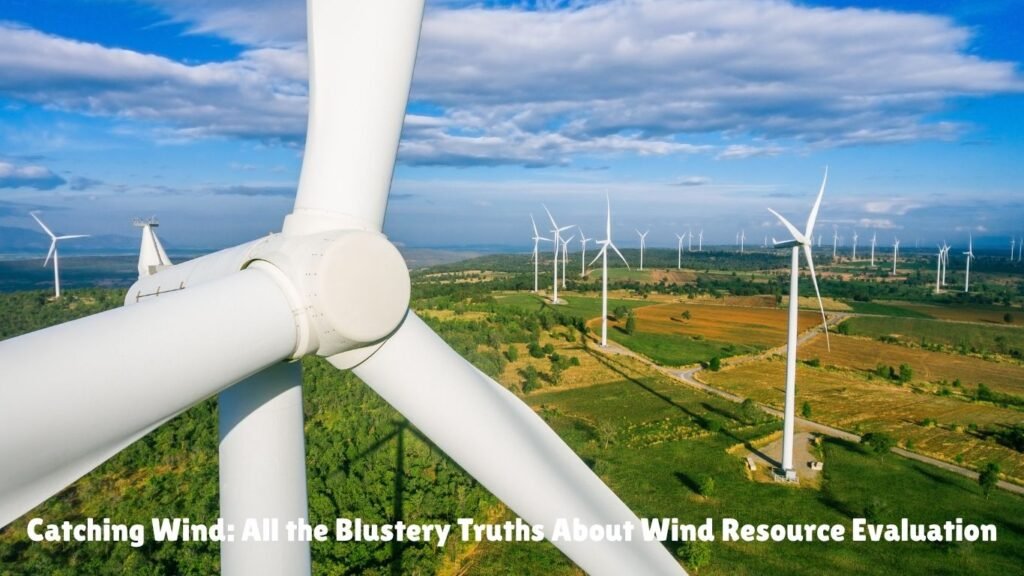Let me yank the curtain back and speak plainly—if you’re the sort who shrugs off wind resource evaluation like a gust through an open window, you might want to sit tight. Because wind, my friend, isn’t just for kites and tumbleweeds. It’s gold dust in motion, and understanding its mood swings could make—or break-a fortune in turbines and renewable dreams.
I’ve danced this dance before and sipped lukewarm coffee in trailers on desolate hillsides, eyes glued to anemometers. Whispered curses when the wind didn’t show, and grinned like a loon when it howled just right. So, let’s untangle the knot. Here’s everything you didn’t know you needed to know—laid out raw and a bit rough around the edges, how I like it.
What Even Is Wind Resource Evaluation?
Think of it as reading the sky’s diary. Wind resource evaluation is the science (and, honestly, a bit of art) of measuring, monitoring, and modeling how the wind behaves in a specific location.
You don’t just throw up a windmill and hope for the best. That’s like opening a seafood restaurant in the desert—ambitious, but a touch wild.
Professionals (and I use the term with love) set up meteorological masts, install data loggers, deploy LIDAR systems, and track the whispers of the breeze for months—sometimes years. They gauge average speeds, turbulence, direction changes, seasonal shifts, and the almighty potential for harvestable energy.
Why Should I Give a Flying Fig About Wind?
Because wind is picky, it plays favorites. One ridge blows strong and steady; it’s all huffs and hiccups a few meters away. If you don’t measure, you’re not building wind farms but costly lawn ornaments.
Good wind equals good cash flow. Bad wind? Well, I hope you like explaining lost investments to stakeholders.
How Long Does a Wind Study Take?
Ah, the million-dollar question. Or more literally, the multi-million-dollar delay.
Ideally, 12 months minimum. That way, you capture all four seasons and their unpredictable tantrums. You want to know how summer thermals mix with autumn’s grumpiness. And you want data that can walk the tightrope of bankability—meaning lenders won’t laugh you out of the boardroom.
Anything shorter than 6 months, and you’re guessing with spreadsheets.
Can’t I Use Satellite Data?
You could. You could navigate by licking your finger and holding it to the wind.
Satellite data’s a great appetizer. It shows you where to look. But it won’t tell you about local quirks—like a sneaky valley that funnels gales or a neighboring peak that throws shade (literally and aerodynamically).
Ground truth, as we say in the biz, is non-negotiable. Feet on the ground, sensors in the air—that’s the way.
What Equipment’s Involved?
You’re gonna love this part—it’s tech meets frontier. Expect towers, guy wires, solar-powered data loggers, temperature sensors, barometric pressure gauges, wind vanes, and a tangle of cables that would make Medusa blush.
Or, if you’re fancy, you go with LIDAR or SODAR—like wind-detecting bats that send back signals with a whisper—less ground disruption, more portability, but a bit pricier.
Either way, we’re listening to the sky’s gossip and recording every sigh.
What’s the End Goal of All This?
Sweet, sweet certainty.
The endgame is a wind profile—a detailed report that reads like a love letter to investors and developers. It’s got numbers, charts, and long-tail distribution curves. You feed it into simulation software to predict energy output. This, dear reader, is how billion-dollar wind farms are born.
Who Can Do This?
You? Probably not. Unless you moonlight as a data scientist, field technician, mechanical engineer, and psychic.
Most folks hand it over to companies like ART Group. These folks don’t just stroll in with clipboards and hopes—they come loaded with industry experience, Australian-made equipment, and the swagger you earn after powering half the outback.
ART Group doesn’t cut corners. They build turnkey solutions, starting from wind sniffing to grid integration. They’re the ones you call when you want the job done so well that even the wind nods in approval.
Is It Worth the Cost?
Short answer? Absolutely.
Long answer? Imagine dumping millions into infrastructure only to find the wind’s not that into you. A solid evaluation saves money, time, and pride. It makes everything smoother, from permitting to financing to choosing the right turbine model.
What Happens After the Study?
After the data is gathered and lovingly massaged into readable formats, it gets passed to project planners, engineers, financial analysts, and more.
Then it’s decision time. Is the site viable? Do we go big, go home, or go elsewhere? And if the wind gods smile, there will be green lights and spinning blades ahead.
The Truth Few Talk About
Here’s the quiet part: wind evaluation is a waiting game. It’s early mornings, icy fingers, and gear that refuses to cooperate in rainstorms. It’s also addictive. There’s something primal about measuring the breath of Earth.
Some days it’s frustrating. Other days it’s transcendent.
But always—always—it’s necessary.
Parting Breeze: Why It All Matters
I’ve seen too many projects leap before looking, trusting gut feelings over solid data. Wind can be generous, but she’s also wild. You don’t wrangle her with guesswork. You win her over with respect, science, and patience.
So if you’re stepping into the world of renewables, start with the wind. Listen to her. Learn her rhythms. And for heaven’s sake, do a proper wind resource evaluation. Not just because the banks demand it. Not just because engineers like tidy charts.
But because she deserves it.
And if you’re wise, you’ll let ART Group handle it—because when the wind speaks, you want someone who understands every word.







